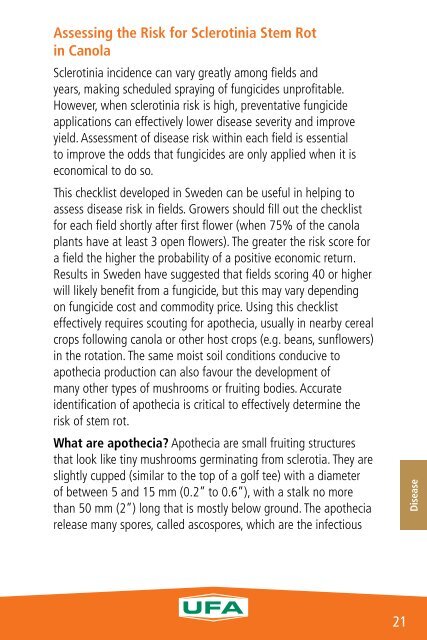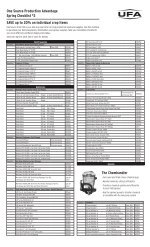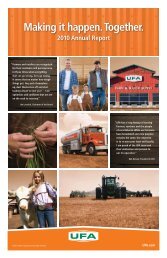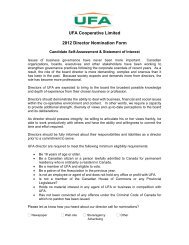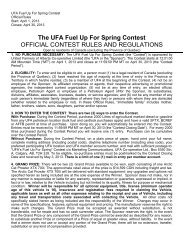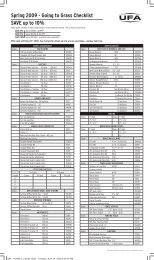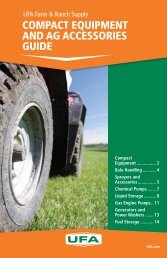CANOLA SEED - UFA.com
CANOLA SEED - UFA.com
CANOLA SEED - UFA.com
Create successful ePaper yourself
Turn your PDF publications into a flip-book with our unique Google optimized e-Paper software.
Assessing the Risk for Sclerotinia Stem Rot<br />
in Canola<br />
Sclerotinia incidence can vary greatly among fields and<br />
years, making scheduled spraying of fungicides unprofitable.<br />
However, when sclerotinia risk is high, preventative fungicide<br />
applications can effectively lower disease severity and improve<br />
yield. Assessment of disease risk within each field is essential<br />
to improve the odds that fungicides are only applied when it is<br />
economical to do so.<br />
This checklist developed in Sweden can be useful in helping to<br />
assess disease risk in fields. Growers should fill out the checklist<br />
for each field shortly after first flower (when 75% of the canola<br />
plants have at least 3 open flowers). The greater the risk score for<br />
a field the higher the probability of a positive economic return.<br />
Results in Sweden have suggested that fields scoring 40 or higher<br />
will likely benefit from a fungicide, but this may vary depending<br />
on fungicide cost and <strong>com</strong>modity price. Using this checklist<br />
effectively requires scouting for apothecia, usually in nearby cereal<br />
crops following canola or other host crops (e.g. beans, sunflowers)<br />
in the rotation. The same moist soil conditions conducive to<br />
apothecia production can also favour the development of<br />
many other types of mushrooms or fruiting bodies. Accurate<br />
identification of apothecia is critical to effectively determine the<br />
risk of stem rot.<br />
What are apothecia? Apothecia are small fruiting structures<br />
that look like tiny mushrooms germinating from sclerotia. They are<br />
slightly cupped (similar to the top of a golf tee) with a diameter<br />
of between 5 and 15 mm (0.2” to 0.6”), with a stalk no more<br />
than 50 mm (2”) long that is mostly below ground. The apothecia<br />
release many spores, called ascospores, which are the infectious<br />
Disease<br />
21


